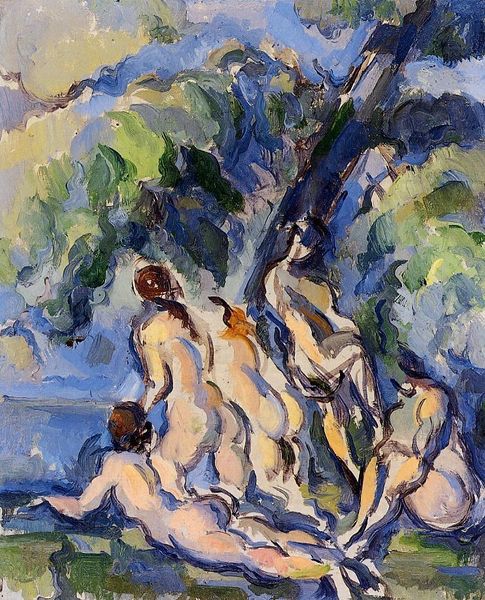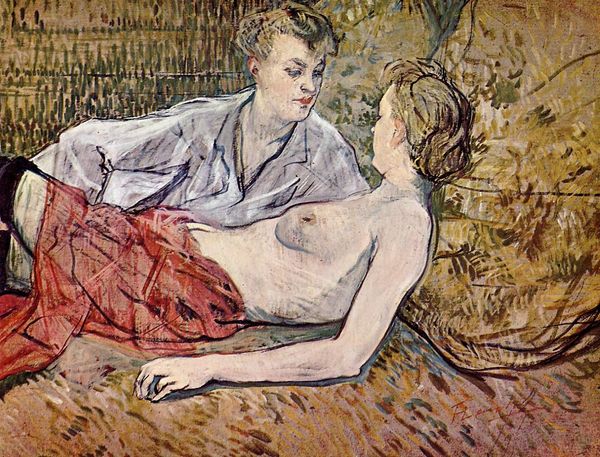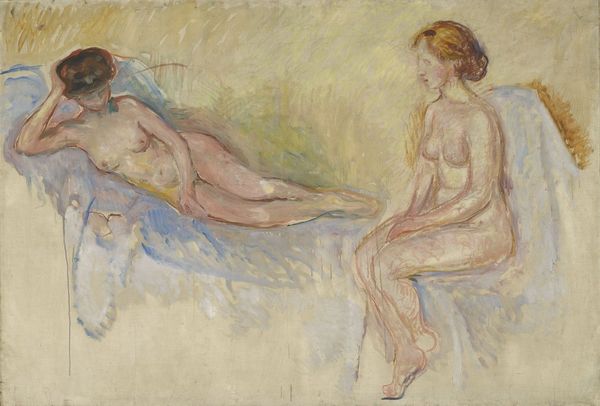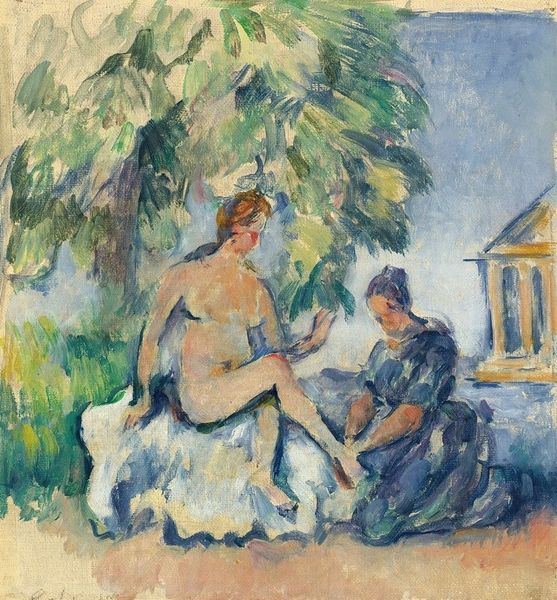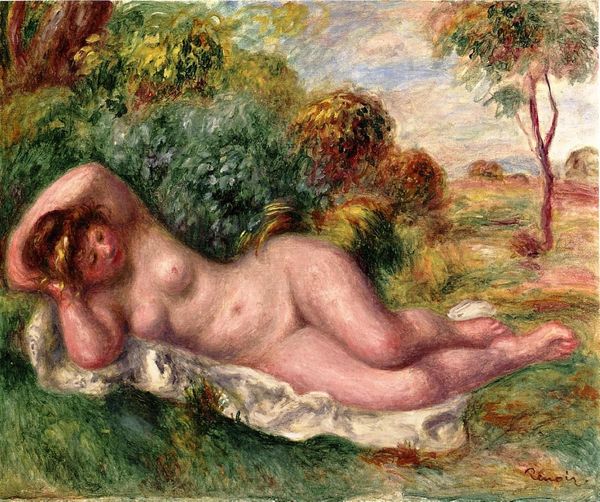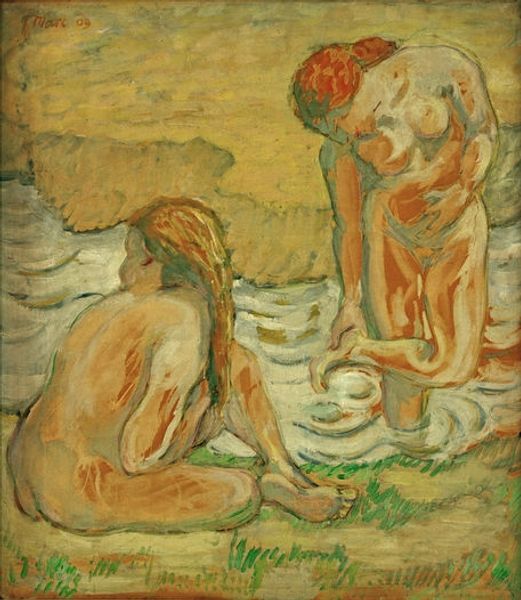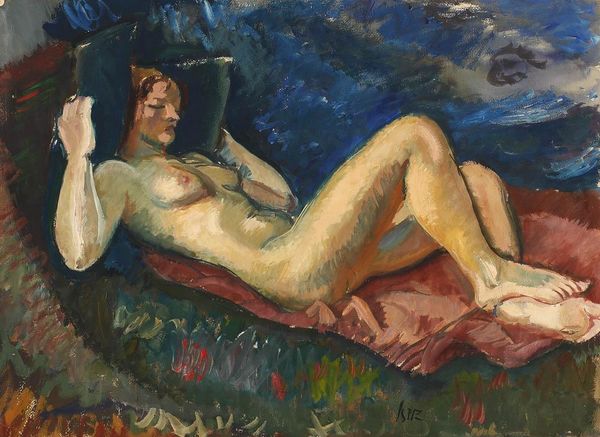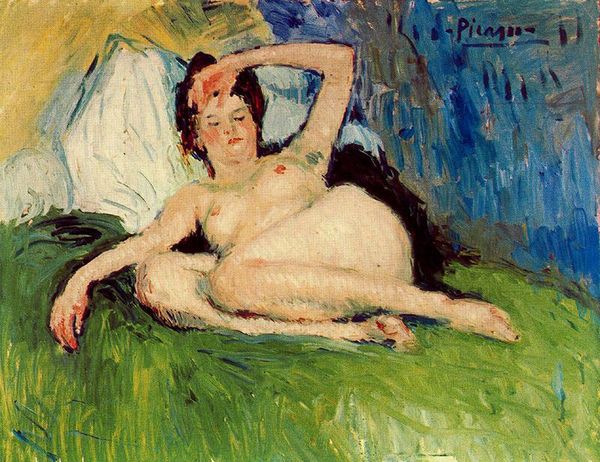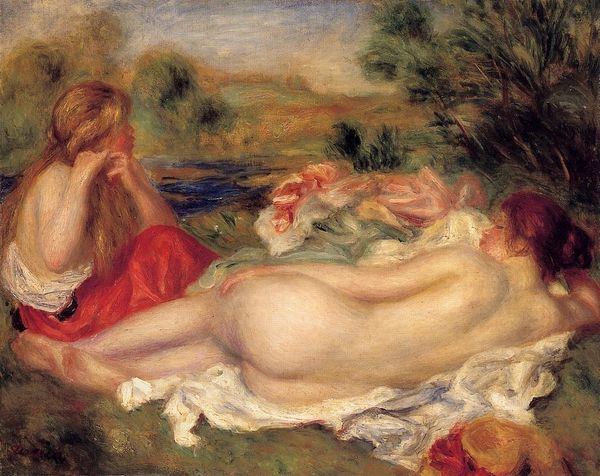
painting, oil-paint
#
painting
#
oil-paint
#
landscape
#
figuration
#
oil painting
#
mythology
#
symbolism
#
history-painting
#
post-impressionism
#
academic-art
#
nude
Dimensions: 32.1 x 23.5 cm
Copyright: Public domain
Editor: So, this is Cézanne's "Bathsheba," from 1890. It's an oil painting, and it definitely has a different feel than other paintings of this subject that I've seen. There's something about the gaze and the abstracted setting that's almost unsettling. What do you see in this piece, especially regarding how he handles the classical subject matter? Curator: The gaze indeed is key, isn't it? Consider the symbols Cézanne employs. We see Bathsheba, traditionally a symbol of beauty and temptation, but here she's rendered with a weight and a vulnerability that depart from mere objectification. The dark figure beside her--is it a servant, or David himself, cloaked and lurking? What does that say? Editor: I hadn’t thought of David lurking! The figure does blend into the landscape though, like guilt perhaps? But if so, what does it all mean? Curator: Exactly. The landscape, almost primordial in its rawness, becomes a psychological space. Cézanne moves away from academic rendering; notice the brushstrokes, the use of colour to create form. Does it not call forth primal emotional content, almost predating history? Consider then, how this deviation from conventional representation heightens the story’s moral complexities, making Bathsheba less a seductress, more a victim, marked. Editor: I see your point. He’s using the visual language to comment on power dynamics within the story itself. So much of the symbolism challenges typical assumptions. Curator: Indeed. The genius lies in how he compels us to actively question what these symbols have come to mean over centuries, reinventing visual and emotional access. Editor: That’s a perspective I hadn't considered. It makes you rethink the whole story and Cézanne’s role as an interpreter. Thanks!
Comments
No comments
Be the first to comment and join the conversation on the ultimate creative platform.
